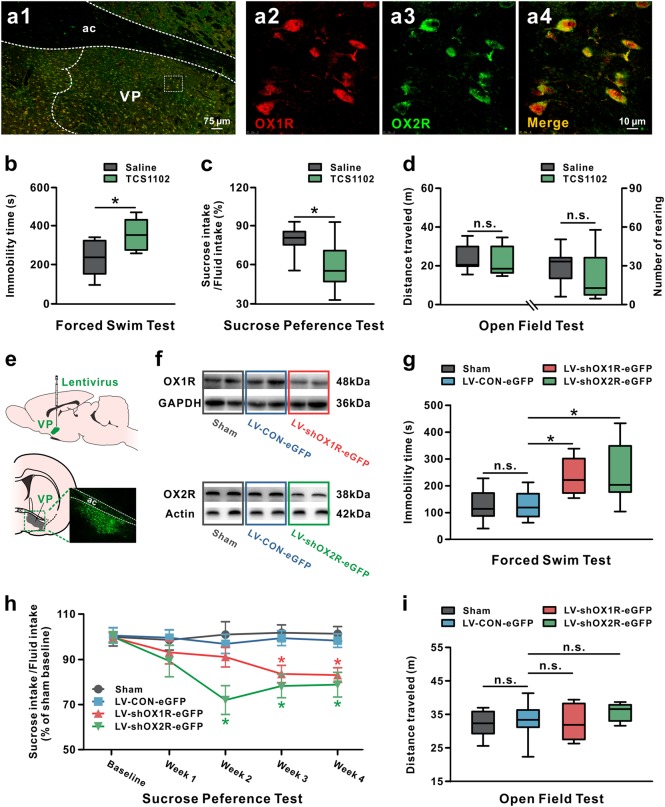Fig. 1.
Pharmacological blockage or lentiviral-mediated knockdown of orexin receptors in VP led to depression-like behaviors. a Double immunostaining results showed that two orexin receptors, OX1R (red) and OX2R (green), were co-localized in all of the stained VP neurons. b–d Microinjection of TCS1102, a potent dual orexin receptor antagonist, into VP increased immobility time in the forced swim test (n = 11–12) (b) and decreased sucrose preference in the sucrose preference test (n = 11) (c), but did not influence distance traveled and number of rearing in the open field test (n = 11–12) (d). In the forced swim test and open field test, n = 11 for the saline group, n = 12 for the TCS1102 group. e A coronal brain section showing the microinjection site of lentivirus in VP. f Identification of the downregulation efficiency of OX1R and OX2R protein by western blot. g–i Effects of downregulation of OX1R or OX2R in VP on behaviors of rats in the forced swim test (n = 9–11) (g), sucrose preference test (n = 10) (h), and open field test (n = 9–11) (i). In the forced swim test and open field test, n = 9 for the sham group, n = 10 for the LV-Control-eGFP and LV-shOX1R-eGFP group, n = 11 for the LV-shOX2R-eGFP group. Data are represented as median (horizontal bar) with 25th–75th (box) and 10th–90th (whiskers) percentiles; n.s. indicates not significant and *P < 0.05, by two-tailed unpaired t-test (b–d), one-way ANOVA (g, i), or repeated measures two-way ANOVA (h) followed by Bonferroni-corrected t test. ac anterior commissure, VP ventral pallidum

